6. Santa Sangre (1989, Alejandro Jodowrosky)
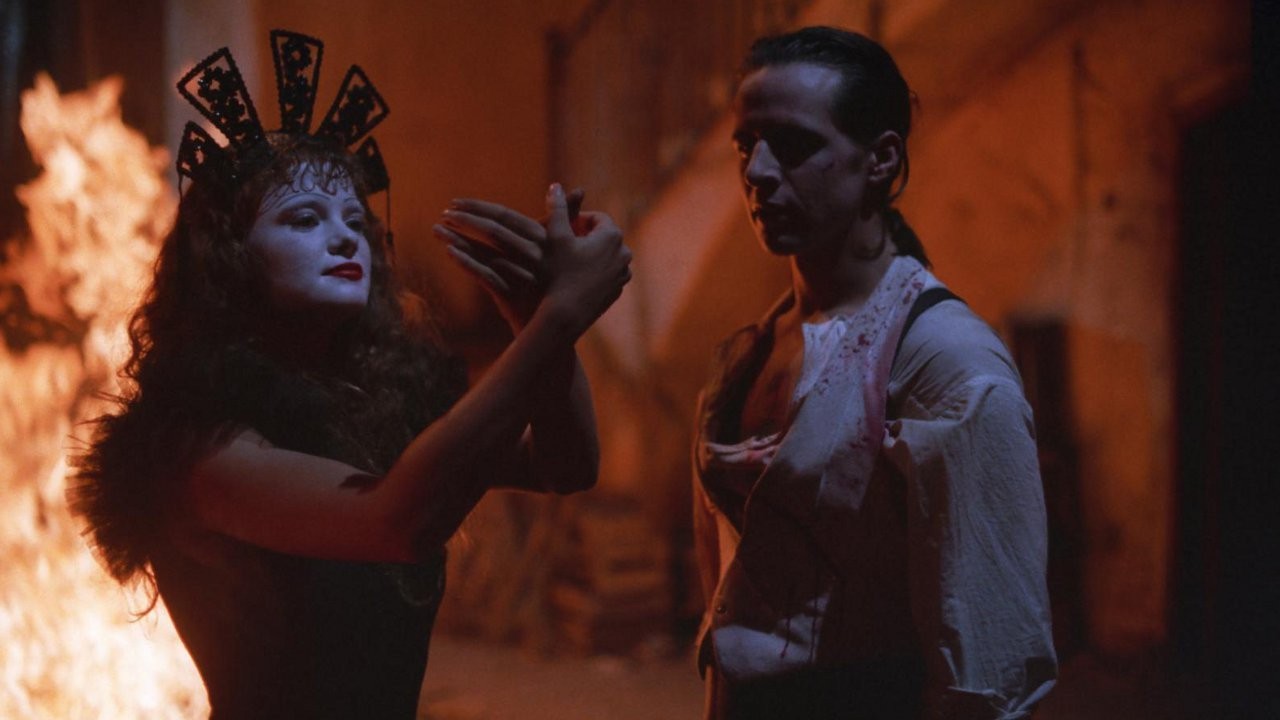
There really is one word that comes up when trying to discuss Alejandro Jodowrosky’s film. That word would be visceral. Jodowrosky is known for being a provocateur and a man of many artistic endeavors beyond cinema. Therefore, he only made two films during the decade. However, the film is a great example of avant-garde cinema with strong ideas beneath the surface.
The core of the film is the relationship between Fénix and his mother, Concha. The film shows two time periods: Fénix as a young boy performing at his father’s circus and as a young man after years at a mental institution. In addition to the oedipal dynamic, Concha is a literal possessive force over her son in that she assumes control of his arms.
Fénix is a performer and Jodorowsky focuses on the act of performing throughout the film. There is a sadness revolving around the figure of the performer. An example of a memorably melancholic sequence is the death of a circus elephant. Fénix is one of the few that truly feels for the loss of the animal, which is a clue that he is not like his vengeful mother. The film serves as a highlight of avant-garde cinema of the 80s. An inspirational piece of art that is equal parts daring as it is bizarrely satisfying.
7. Local Hero (1983, Bill Forsyth)
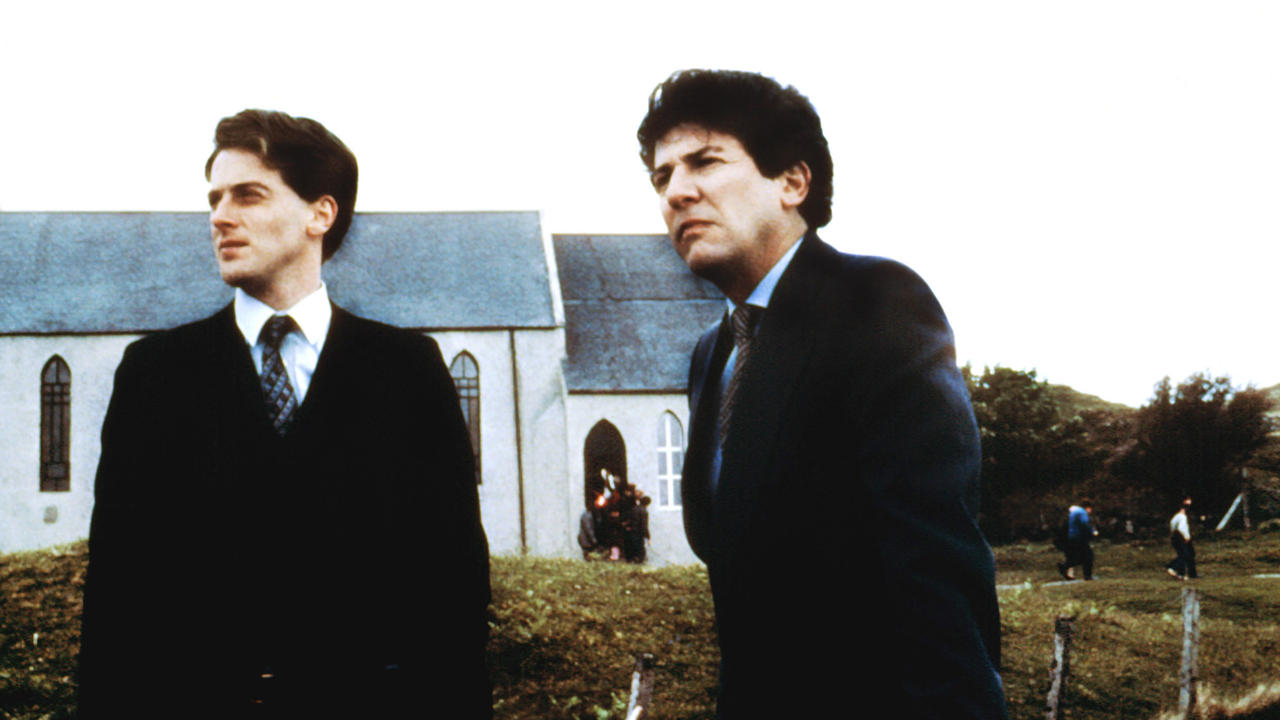
The corporate world of the early 80s clashes with the simple lifestyle of rural Scotland in this indie comedy from Bill Forsyth. The emphasis on character vignettes and situations give the film a charm that is utterly singular in vision. Forsyth is very playful with his cinematic references. For example, there’s a scene in which two characters look up at the sky and see the Northern Lights, which is a reference to the fantastical use of color that would be common in a Michael Powell and Emeric Pressburger film.
The bare-bones plot follows Mac, a businessman working for the Knox Oil Company in Houston, Texas. He gets assigned by the CEO of the oil company to go to a small Scottish beach town to expedite a deal to buy the land for an oil refinery. Happer, the CEO, is played by the one and only Burt Lancaster in a mesmerizing supporting role. A complex and contradictory man who runs an oil company but has an obsession with the stars and the power of the natural world. Lancaster savors every line and his mannerisms play perfectly for comedic juxtaposition with someone like Mac, who is very much wired in to the technological world.
Bill Forsyth has a disinterest in story. He is intrigued by situations and specifically in the behavior of characters in situations. The story is a tool for Forsyth to create moments or bits concerning the beach town locals and Mac. The result is a quirky type of comedy mostly derived from Mac’s outsider perspective and the eccentricities of certain characters in the town. Forsyth employs the recurring gag, as an homage to the Marx Brothers, such as the psychiatrist that Happer hires to mock and berate him with the purpose of checking his ego. It’s incredibly funny and simple with every escalating recurring bit. That’s not to say that the film doesn’t have strong ideas.
Forsyth wrote the Mac character as firmly planted in the ever-growing corporate world of the eighties. Technology dominates his life. Mac journeys back to the natural world where folk and mythology barely exist. As Forsyth has described, Mac “sets out with a story in mind but nothing happens with the story. Although things happen to the characters.”
8. Repo Man (1984, Alex Cox)
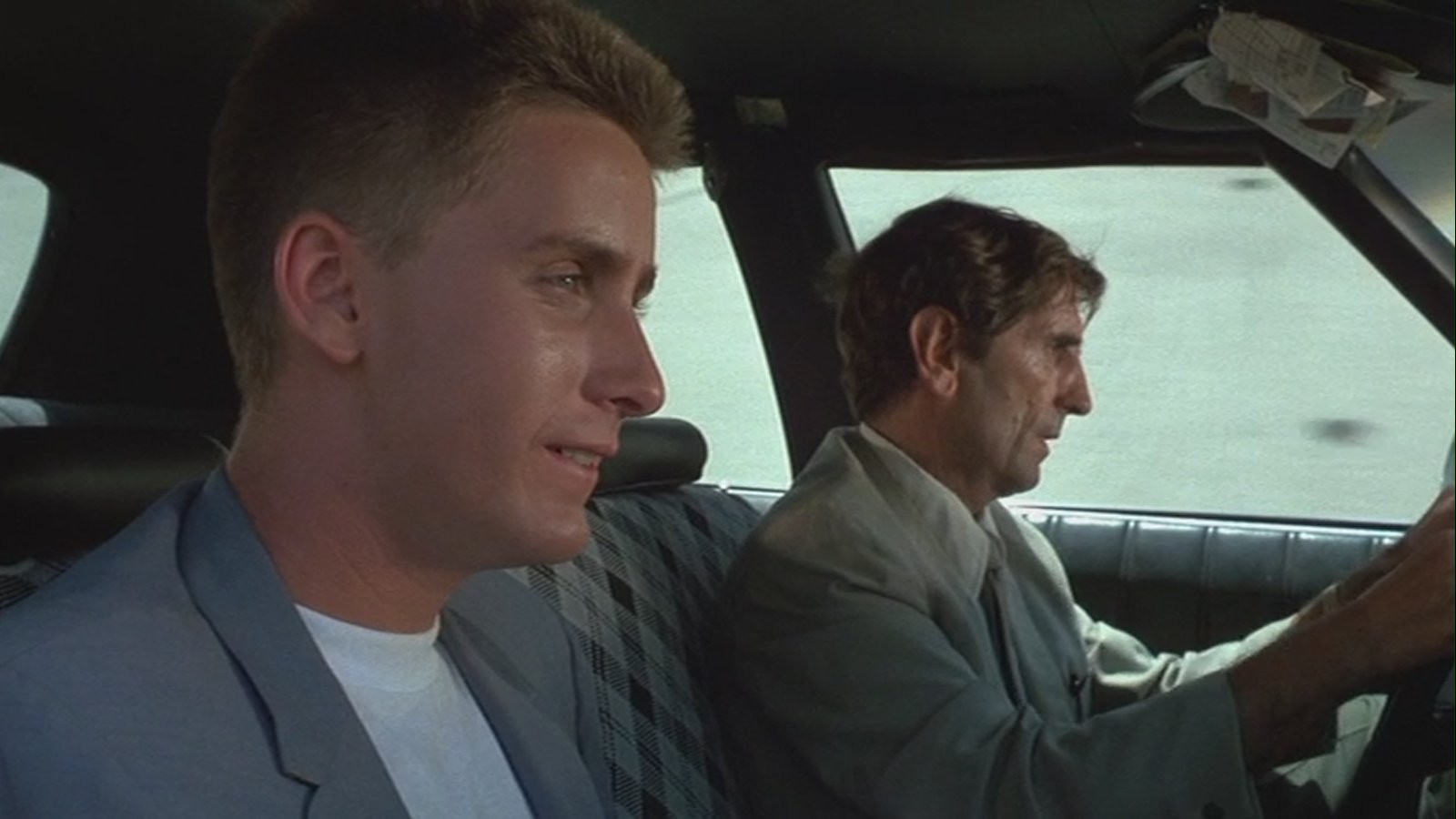
Alex Cox’s 1984 punk mash up is unlike any film of the decade. At face value, the punk energy is mainly in the presentation of the film such as the music, performed by multiple punk bands of the time, including a main theme by Iggy Pop. It also has a flashy opening credits sequence that sets the tone as well as Otto, the down-on-his-luck protagonist is himself part of the LA Punk Scene depicted in the film. However, Alex Cox was really invested in creating a dystopian LA of Reagan’s America. A counter to the conservative political landscape so that the punk is not solely used as an aesthetic for the movie but an ideological framework for the world of the film.
The bizarre plot has this fluid quality as Cox plays with genres while the basic story is very reminiscent of Robert Aldrich’s 1955 underrated masterpiece “Kiss Me Deadly”. Cox has been very upfront about Aldrich’s film being one of his favorites and a touchstone on “Repo Man.” Even going so far as to include nuclear technology as the MacGuffin. What makes the film enjoyable is that the messy structure and well realized leads engage the audience and keep the political themes of the film from being over baring or tedious.
One element that must be discussed is the cinematography by Robby Muller. His approach to master shots and emphasis on lighting was at odds with Cox many times during production. Cox wanted to have a more kinetic composition to the film and use handheld shots but Muller was completely opposed. What results is Muller winning the stylistic battle and through lighting, presenting an LA that is unlike any other in film. In doing so, adding another layer to the punk spirit of the film.
9. Near Dark (1987, Kathryn Bigelow)
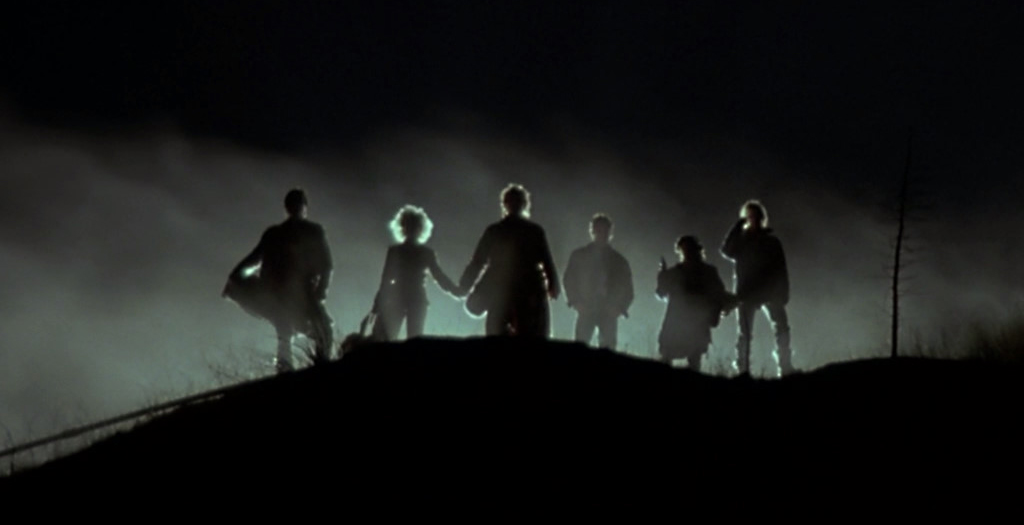
Kathryn Bigelow’s unique genre-bending hybrid horror film is one of the strongest takes on the vampire myth of the eighties. Bigelow’s strong direction and confident stylistic choices make it a shame that it was poorly received during its initial run. Bigelow’s painting background shows as she has a strong command of the visuals.
The film shifts between Romance, Western, Action and Horror. She captures western iconography such as cowboy hats, horses, tumbleweeds, spurs, among others. Although these iconographic images are updated to the eighties, it allows viewers to understand the world of the film with minimal need for exposition. Bigelow has a very successful career but “Near Dark” is such an oddly fascinating piece of its time and singular take on the vampire mythos.
In the film, Caleb is a young man that lives on a farm with his father and sister. He wants excitement and finds it in a beautiful outsider called Mae. They spend time together over one night. The only problem is that she is a vampire and bites Caleb. His world turns as he is abducted by Mae’s traveling family of vampires who threaten to kill him if he doesn’t adjust to their ways. Mae wants Caleb to join the family. These members of vampires are well defined through genre archetypes.
The most memorable character of the film is Severen played by the late Bill Paxton. He is incredibly dynamic and charming. He’s also dangerous and ruthless. The closest character to an antagonist that Caleb has. Bigelow doesn’t shy away from the violence expected in vampire mythology. For example, there is a long scene at a bar that is brutal, stylistic, and incredibly tense as the vampires hunt for food.
The spine of the film is the familial through-line. Caleb and Mae live sad lives. They need each other and want to escape the family. To underscore their relationship, Tangerine Dream composed beautiful music that fits the style and emotional core of the two leads. Ultimately, the main question that the film explores is that of humanity. Can Caleb and Mae return to humanity?
10. After Hours (1985, Martin Scorsese)
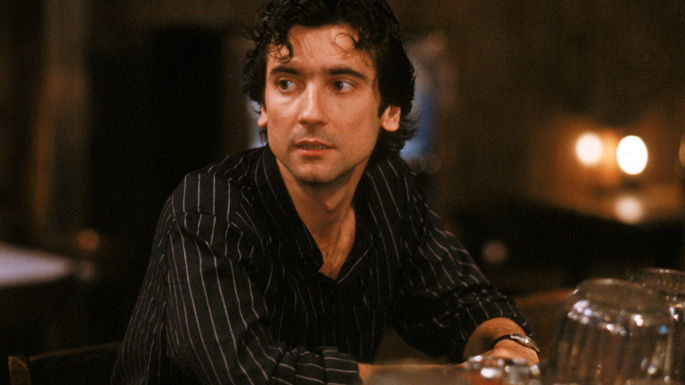
The early eighties were a difficult time for Martin Scorsese’s career. He faced a challenge in deciding what types of films to make. He wanted to make personal films and figure out if he could make them within the studio system. “After Hours” is usually considered a lesser Scorsese film, mainly because it stands apart from his filmography.
The film’s setting is a fascinating exploration of perspective. It takes place mostly in the SoHo area of New York City. Set over the course of one night, Paul Hackett, the protagonist goes on a comedically nightmarish journey meeting colorful characters and digging himself into worse situations. Paul is a bland character in the sense that his world is bland and mundane. His desire for adventure is what leads him to this almost alien world of SoHo.
Scorsese is always experimenting with form and “After Hours” is virtuosic and at times frenetic. The man is an encyclopedia of film and then some. So, he is constantly questioning how the audience should experience a story and more specifically, the perspective of a story. For example, shooting a cab ride from Paul’s apartment into SoHo in a lower frame rate clues the viewer to the idea that Paul is entering a nightmare world.
The oddity of the story and vignetted structure of the script gives an opportunity to get Paul into different situations with amazing supporting characters. Part of comedy arises from the absurdity and escalation of each following vignette. Paul started out with meeting a cute woman at a coffee shop.
As he moves within this world, Paul digs himself into a deeper hole and his nice-guy persona starts to fade. He feels the universe is set out against him. Paul only wants to return home from this voyage but feels like he is being punished for even having attempted to break from his mundanity. It’s a highly memorable film that is entertaining and a fascinating study of film comedy.